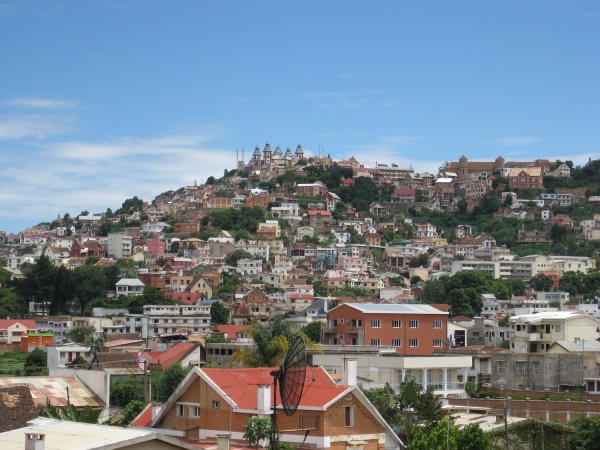Difference between revisions of "Andafiavaratra Palace"
| Line 7: | Line 7: | ||
After the independence of Madagascar, the palace was used as army barracks, court, school of fine arts, presidential palace and finally again as the prime minister's office. | After the independence of Madagascar, the palace was used as army barracks, court, school of fine arts, presidential palace and finally again as the prime minister's office. | ||
| − | In 1976 the palace burnt down. After some great restoration it houses today an exhibition of precious items which were saved from the fire of the Queen's Palace | + | In 1976 the palace burnt down. After some great restoration it houses today an exhibition of precious items which were saved from the fire of the [[Rova | Queen's Palace]] in 1995. |
<googlemap version="0.9" lat="-18.921014" lon="47.533035" zoom="17" controls="large"> | <googlemap version="0.9" lat="-18.921014" lon="47.533035" zoom="17" controls="large"> | ||
Revision as of 10:30, 13 May 2010
The Andafiavaratra Palace, also known as the Prime Minister's Palace, is located north of the Queen's Palace in Antananarivo. Andafiavaratra literally means facing north. It functioned as the palace of the prime minister during the reigns of the last queens.
The original palace was built of wood under the subervision of Queen Ranavalona I. In 1872, this wooden palace was replaced by the current palace after the plans of the British architect William Pool. In the centre of the palace is a large reception room, lit by a glass dome. Each of the four corner towers include a bell tower. From 1864 to 1895 the palace was the residence of prime minister Rainilaiarivony (he who married three queens) who excersised all the power from there.
After the independence of Madagascar, the palace was used as army barracks, court, school of fine arts, presidential palace and finally again as the prime minister's office.
In 1976 the palace burnt down. After some great restoration it houses today an exhibition of precious items which were saved from the fire of the Queen's Palace in 1995.
